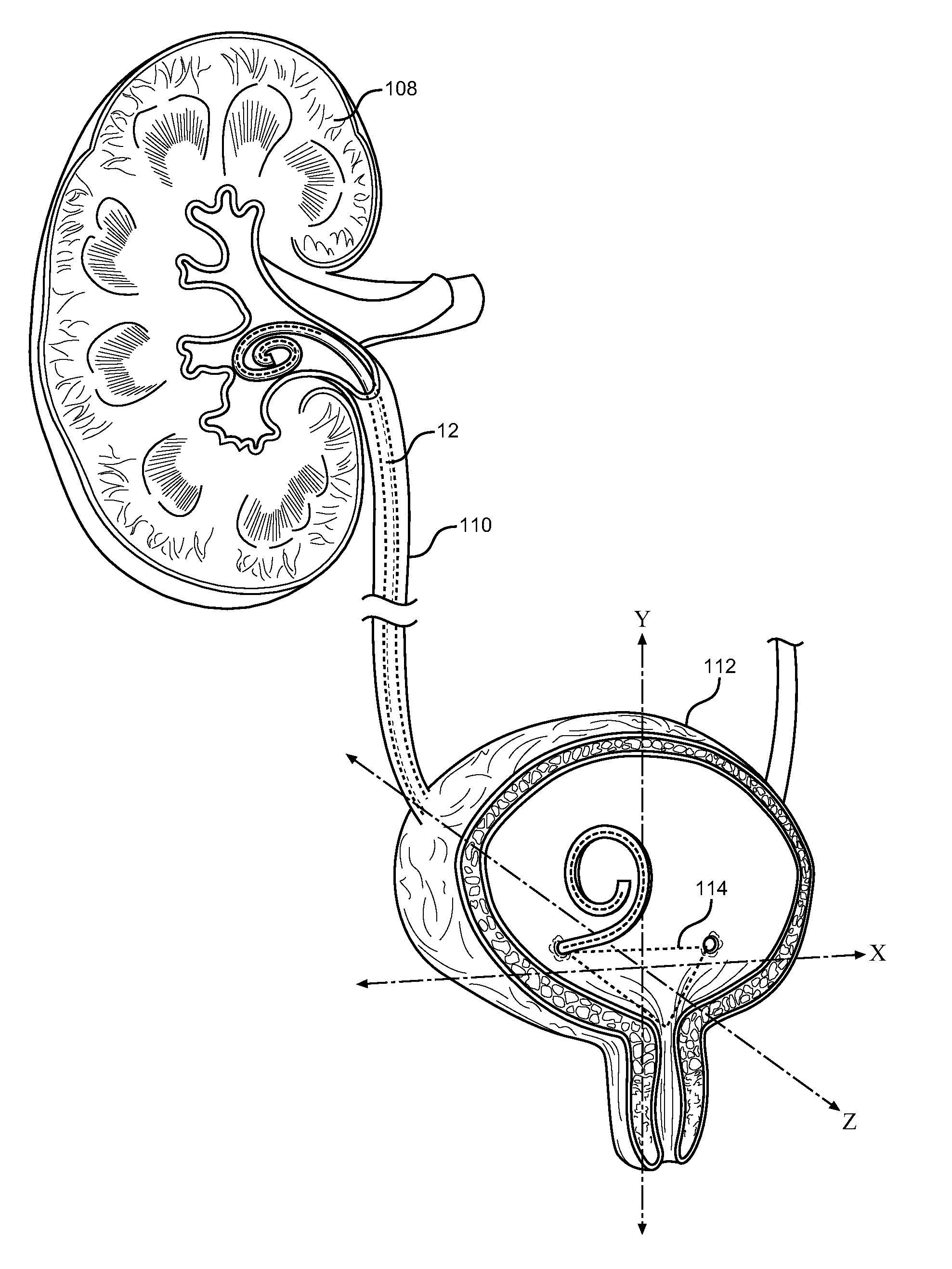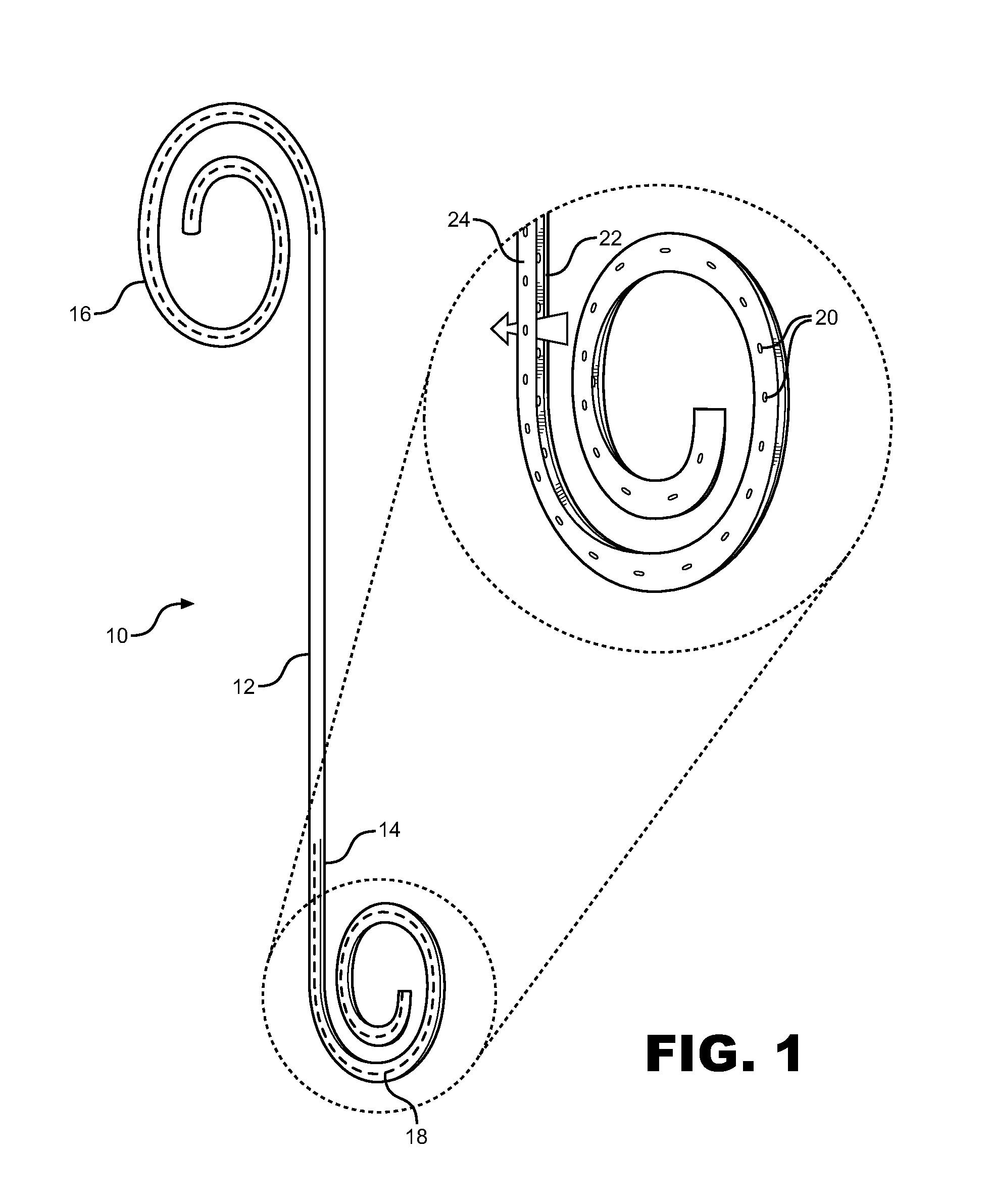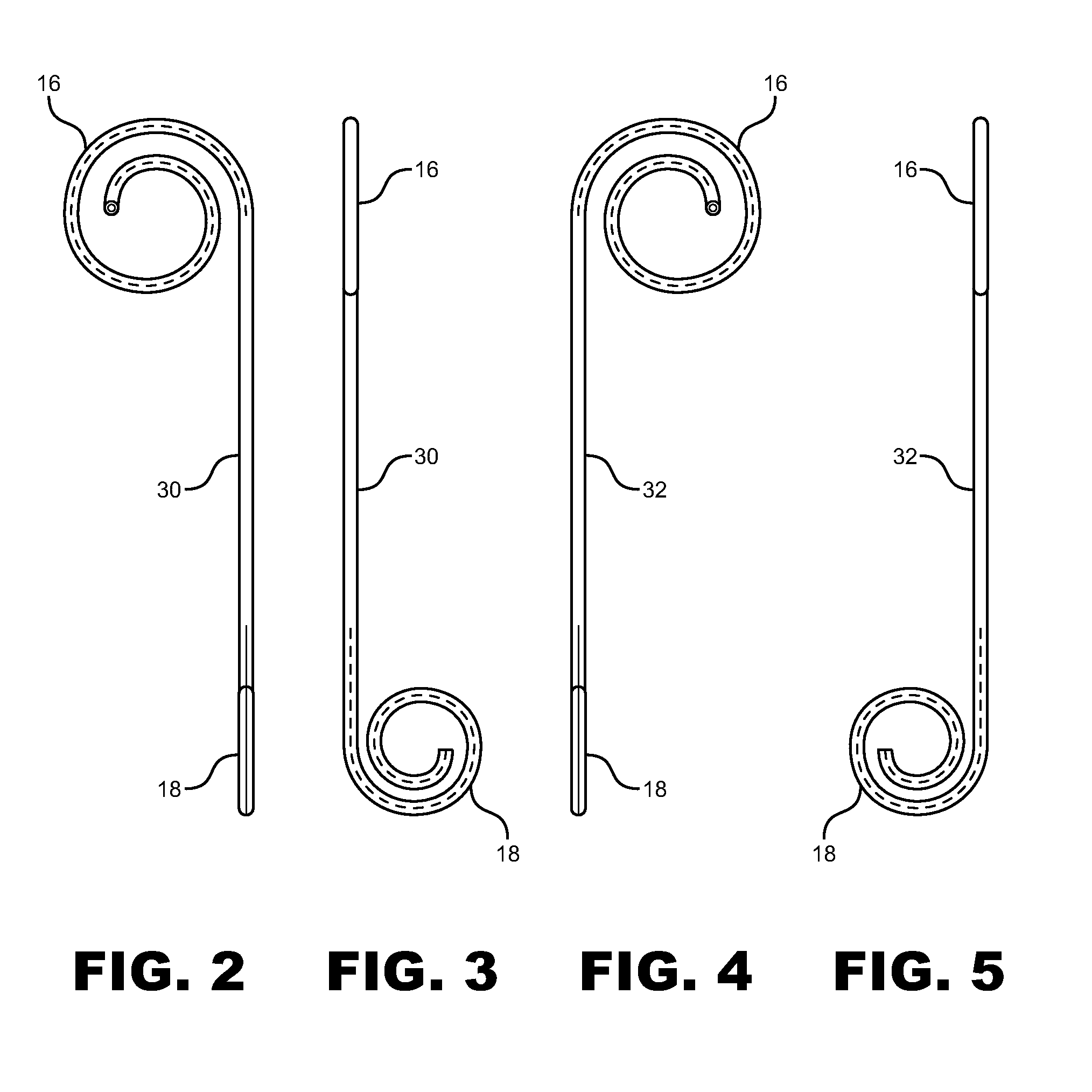Anti-Refluxive and Trigone Sparing Internal Ureteral Stent
a ureteral stent and anti-reflux technology, applied in the field of internal ureteral stents, can solve the problems of threatening renal function, ureteral stents, and may produce adverse effects, and achieve the effect of reducing reflux and/or eliminating reflux and improving the comfort of the device for patients
- Summary
- Abstract
- Description
- Claims
- Application Information
AI Technical Summary
Benefits of technology
Problems solved by technology
Method used
Image
Examples
Embodiment Construction
[0023]FIG. 1 shows a ureteral stent 10 including an elongated body having a proximal end connected to a coiled, renal segment 16 and a distal end connected to a coiled, bladder end segment 18. The elongated body is designed to extend from the renal pelvis to the ureteral orifice. In a preferred embodiment, the elongated body has an upper, tubular body 12 that is connected to the coiled, renal segment at its proximal end and a lower, intramural segment 14 at its distal end that extends through the intramural ureter and connects to the coiled, bladder end segment 18. The upper, tubular body 12 has annular walls having an inner and outer diameter. The outer diameter of the upper, tubular body 12 may be substantially uniform throughout much of the length of the tube, or it may taper from a relatively short region of larger diameter (e.g. the site of repair, where there is a risk that the healing process will substantially restrict flow in the lumen) to a region of generally small diamet...
PUM
 Login to View More
Login to View More Abstract
Description
Claims
Application Information
 Login to View More
Login to View More - R&D
- Intellectual Property
- Life Sciences
- Materials
- Tech Scout
- Unparalleled Data Quality
- Higher Quality Content
- 60% Fewer Hallucinations
Browse by: Latest US Patents, China's latest patents, Technical Efficacy Thesaurus, Application Domain, Technology Topic, Popular Technical Reports.
© 2025 PatSnap. All rights reserved.Legal|Privacy policy|Modern Slavery Act Transparency Statement|Sitemap|About US| Contact US: help@patsnap.com



